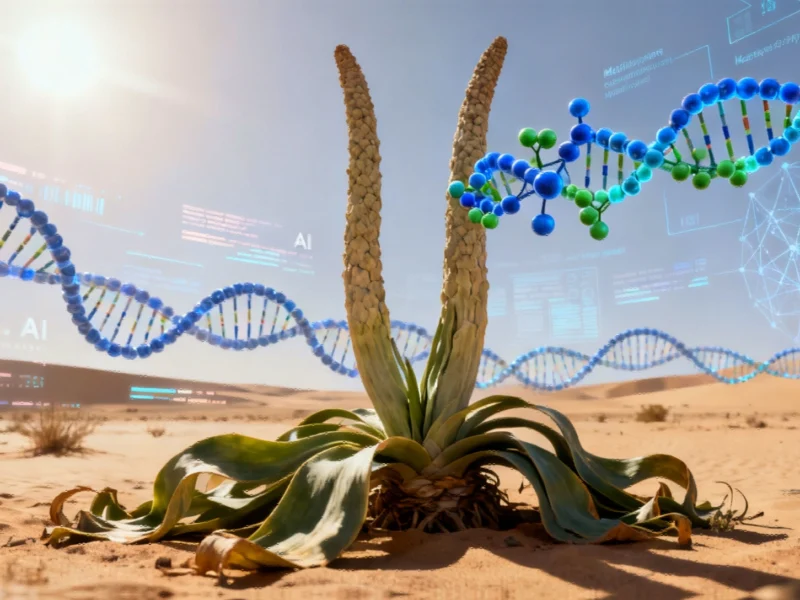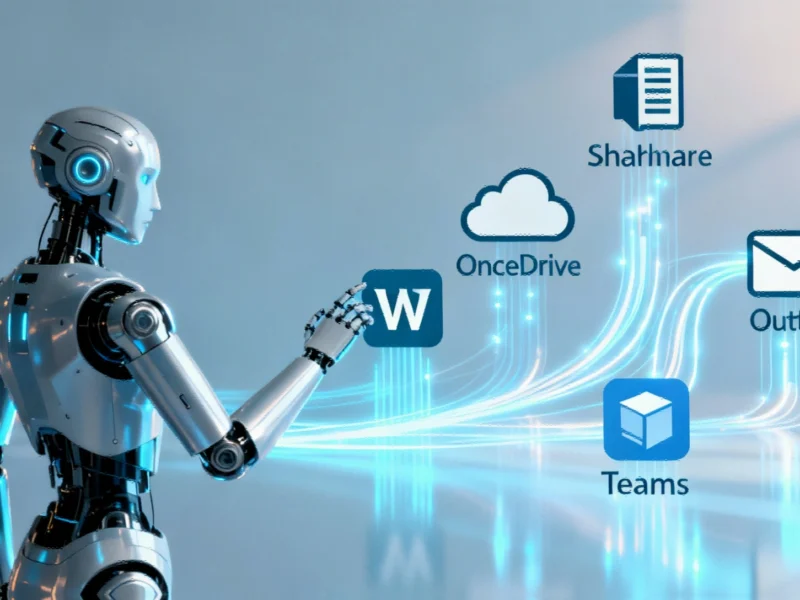The Convergence of Epigenetics and Artificial Intelligence
As the global population ages, understanding the mechanisms behind aging has become one of humanity’s most pressing scientific pursuits. The emerging field of epigenetics—the study of how behaviors and environment can cause changes that affect how genes work—has revealed remarkable insights into how we might potentially slow, halt, or even reverse the aging process. What makes this research particularly exciting today is how artificial intelligence is accelerating discoveries that were once thought impossible. Recent breakthroughs documented in AI-powered epigenetic research demonstrate how machine learning algorithms can analyze complex genetic data at unprecedented speeds, identifying patterns that human researchers might miss.
The relationship between AI and epigenetics represents a paradigm shift in longevity science. While traditional genetic research focused on the static DNA sequence, epigenetics explores the dynamic modifications that regulate gene expression without altering the underlying sequence. These modifications—including DNA methylation, histone modification, and non-coding RNA-associated gene silencing—serve as the body’s biological software, determining which genes are activated or suppressed throughout our lives. With advanced computational technologies now being applied to epigenetic mapping, researchers can process massive datasets to understand how these modifications accumulate over time and contribute to age-related decline.
Learning from Nature’s Longevity Champions
Some of the most compelling evidence for epigenetic aging control comes from the natural world, particularly from organisms that exhibit extraordinary longevity. The welwitschia plant (Welwitschia mirabilis), found in the Namib Desert, has captured scientific attention for its ability to survive for thousands of years while maintaining vigorous health. This ancient gymnosperm possesses what researchers describe as an exceptionally stable epigenome, using DNA methylation to suppress retrotransposons—often called “jumping genes”—that can cause inflammation and cellular damage when activated.
David Sinclair, a professor at Harvard Medical School and leading longevity researcher, emphasizes the importance of these natural models: “This organism can actually teach us quite a lot. This plant can survive for thousands of years, and be just as healthy in midlife at a thousand years as it was when it was only 20 years old. The stabilization of this epigenome and these chemicals could be key to our own immortality.” The welwitschia’s epigenetic stability provides a blueprint for how controlled gene regulation might enable extreme longevity without the degenerative diseases that typically accompany aging in humans.
Epigenetic Reprogramming: From Mice to Humans
Groundbreaking research in epigenetic reprogramming has demonstrated that aging might not be the one-way street we once believed. Sinclair’s laboratory has pioneered techniques to reset epigenetic markers, effectively reversing cellular age in animal models. “What we like to say in my lab is, ‘if you can give something, you can take it away,'” Sinclair explains, referencing a landmark study where his team successfully reversed epigenetic aging in elderly mice. This research supports the theory that epigenetic changes represent a primary driver of aging and age-related diseases.
The connection between epigenetic dysregulation and human disease is becoming increasingly clear. “We’ve coined a term… that epigenetic change is a major driver of aging, and is an underlying component of most diseases that ail us,” Sinclair states. “The majority of the reason we get Alzheimer’s, heart disease, diabetes, is not because the brain gets sick. It’s because the brain is now no longer young enough to heal itself from the damage that’s happening.” This paradigm shift suggests that by addressing the epigenetic factors of aging, we might potentially prevent or treat multiple age-related conditions simultaneously.
The Yamanaka Factors and Controlled Cellular Reprogramming
Perhaps the most promising avenue in epigenetic age reversal involves the Yamanaka factors—a set of four transcription factors (Oct4, Sox2, Klf4, and c-Myc) capable of converting specialized adult cells into induced pluripotent stem cells. While initial attempts to apply these factors to living organisms proved problematic (turning on all four factors continuously in adult mice resulted in rapid death from teratoma formation), researchers discovered that controlled, intermittent application could yield remarkable benefits.
Sinclair highlights the crucial 2016 research by Juan Carlos Belmonte and colleagues: “They turned on the four Yamanaka factors in an adult mouse, a sick, relatively rapidly aging mouse. And the mouse died after a couple of days, which was not great, but then they did something fascinating. They turned them off after two days, and then turned them back on another five days later. So every week, they got two days of reprogramming with these four genes called Yamanaka factors, and those mice lived longer and were healthier.” This pulsed approach to epigenetic reprogramming suggests that partial resetting of cellular age might be achievable without the cancer risks associated with complete dedifferentiation.
AI’s Expanding Role in Epigenetic Discovery
Artificial intelligence is revolutionizing how researchers approach epigenetic research. Machine learning algorithms can now predict how specific epigenetic modifications will affect gene expression, identify potential therapeutic targets, and simulate the effects of epigenetic interventions before they’re tested in living organisms. The integration of AI coaching systems in research environments enables scientists to navigate the enormous complexity of epigenetic networks more efficiently.
Large language models and predictive analytics are particularly valuable for understanding the relationship between environmental factors, lifestyle choices, and epigenetic changes. These AI systems can process thousands of research papers simultaneously, identifying connections between diet, exercise, stress, and epigenetic markers that would take human researchers years to discover. As AI technologies continue to advance, their application in epigenetic medicine is expected to accelerate, potentially shortening the timeline for developing effective age-reversal therapies.
The Future of Epigenetic Age Intervention
Human trials for epigenetic age-reversal therapies are on the horizon, with researchers optimistic about the potential applications. Sinclair suggests that such treatments might become available within our lifetimes: “There may come a day, perhaps not too far into the future, certainly within our lifetime, where we are able to be treated with these genes to reverse aging, so we can treat our own diseases by being young again.” The implications extend beyond mere lifespan extension to what researchers call “healthspan”—the period of life spent in good health, free from the chronic diseases that typically accompany advanced age.
As regulatory frameworks adapt to these emerging technologies, the path to clinical application will require careful validation and safety testing. The FDA approval process for epigenetic therapies will need to balance the tremendous potential benefits against possible risks, particularly concerning cellular reprogramming and the potential for unintended consequences. However, the rapid progress in both epigenetic science and AI-driven research methods suggests that age-reversal treatments that seemed like science fiction just a decade ago may soon become medical reality.
The convergence of epigenetics and artificial intelligence represents one of the most promising frontiers in medicine. By understanding and eventually controlling the epigenetic mechanisms that drive aging, we may not only extend human lifespan but, more importantly, revolutionize how we experience our later years—transforming aging from a process of inevitable decline into a manageable biological process that can be modified, treated, and potentially reversed.
Based on reporting by {‘uri’: ‘forbes.com’, ‘dataType’: ‘news’, ‘title’: ‘Forbes’, ‘description’: ‘Forbes is a global media company, focusing on business, investing, technology, entrepreneurship, leadership, and lifestyle.’, ‘location’: {‘type’: ‘place’, ‘geoNamesId’: ‘5099836’, ‘label’: {‘eng’: ‘Jersey City, New Jersey’}, ‘population’: 247597, ‘lat’: 40.72816, ‘long’: -74.07764, ‘country’: {‘type’: ‘country’, ‘geoNamesId’: ‘6252001’, ‘label’: {‘eng’: ‘United States’}, ‘population’: 310232863, ‘lat’: 39.76, ‘long’: -98.5, ‘area’: 9629091, ‘continent’: ‘Noth America’}}, ‘locationValidated’: False, ‘ranking’: {‘importanceRank’: 13995, ‘alexaGlobalRank’: 242, ‘alexaCountryRank’: 114}}. This article aggregates information from publicly available sources. All trademarks and copyrights belong to their respective owners.



